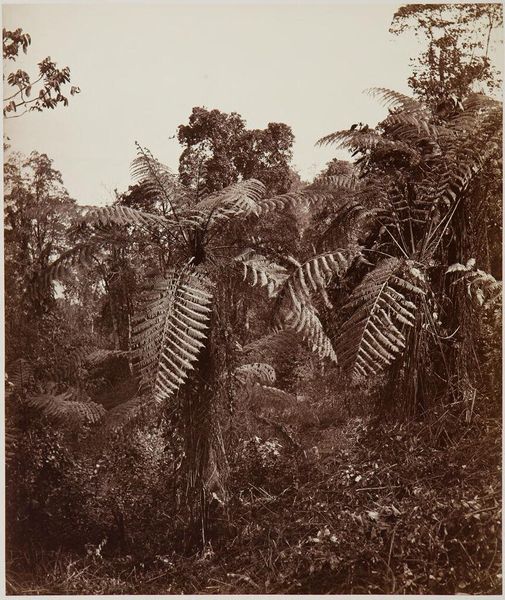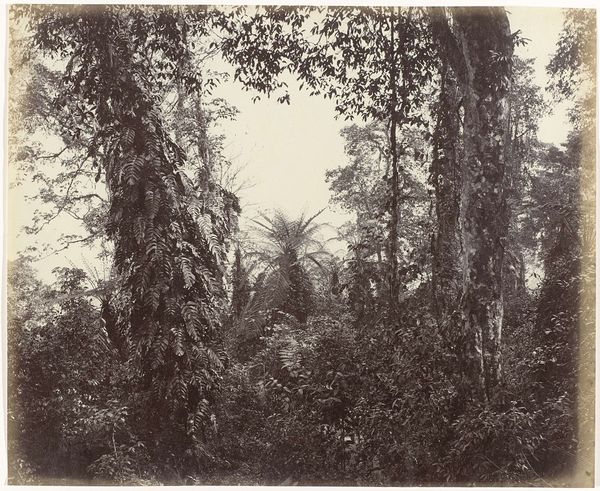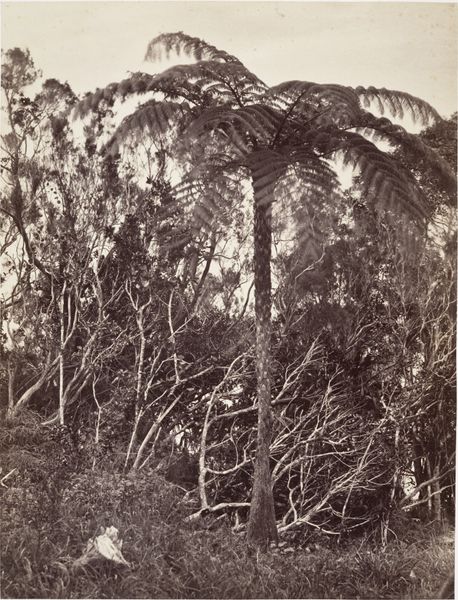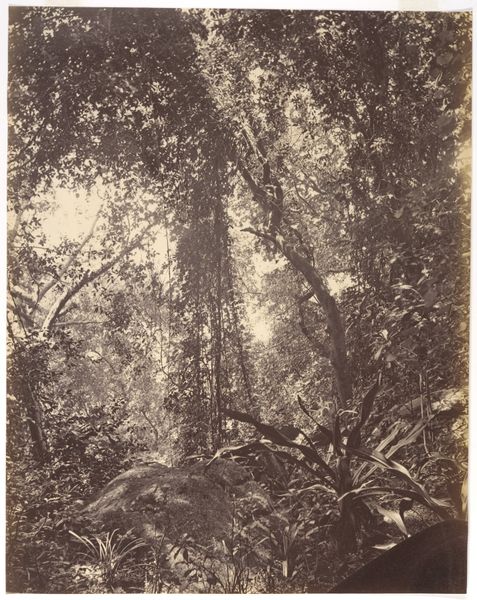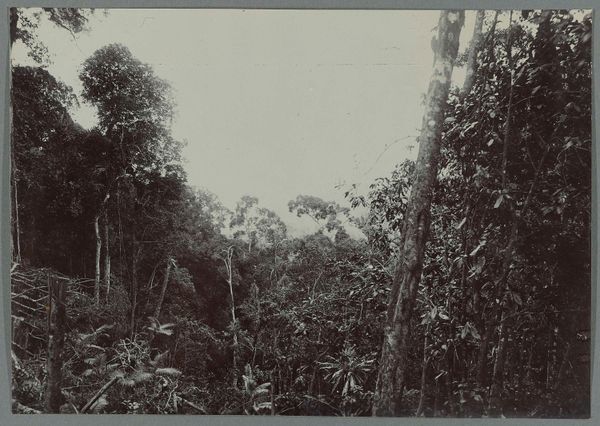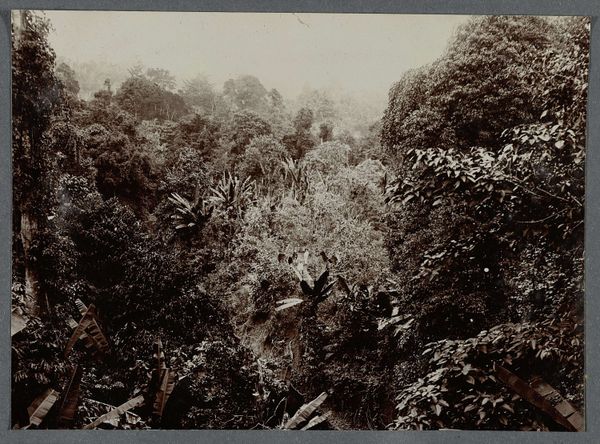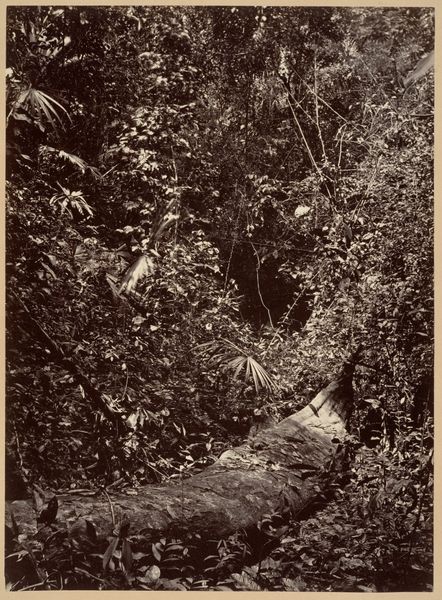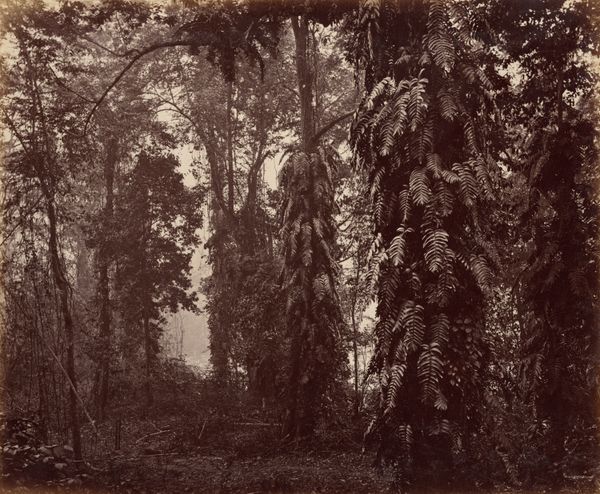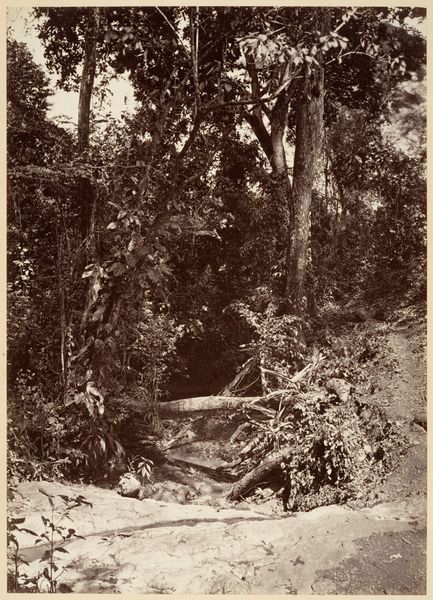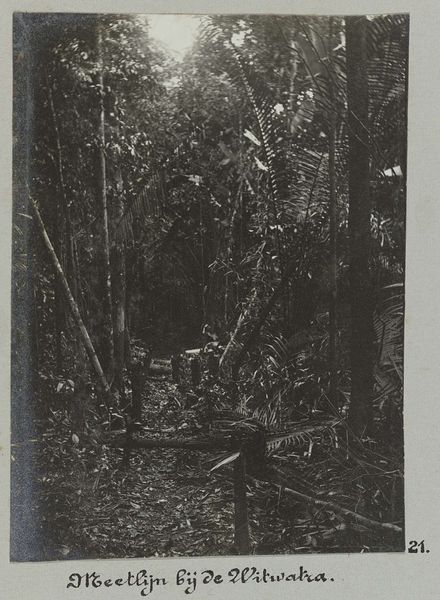
photography
#
nature photography
#
landscape
#
nature
#
photography
Dimensions: height 285 mm, width 242 mm, height 435 mm, width 375 mm
Copyright: Rijks Museum: Open Domain
Editor: This is a photograph titled "Tree ferns in Darjeeling, West Bengal, India," captured between 1868 and 1869 by Samuel Bourne. The density of the foliage is striking! What is your take on it? Curator: Bourne's image transports us to a specific moment in the history of colonial exploration and representation. Consider that during this period, photography was actively used to document and "claim" territories. How do you think this photograph played into Britain's colonial project in India? Editor: It’s interesting to consider that. Perhaps images like these exoticized India, framing it as a place ripe for the taking, or needing taming? Curator: Exactly. And Bourne was working for the British government. What impact would the use of the photographic medium have at that time versus the role of paintings documenting newly colonised locations? Editor: Because photography was seen as more factual then, people may have been quicker to take this view as unbiased reality. Almost as if Bourne was presenting hard, empirical proof. It normalizes that perspective in a way a painting may not. Curator: Precisely! The photograph almost presents a 'scientific' vision of the landscape, a seemingly objective inventory of its natural resources. Consider who this image was designed for, to further understand the effect it would have had at the time. Where do you imagine the image was first presented? Editor: Most likely back in Britain, to those with influence. I guess that photography becomes more than just a recording, but also an incredibly powerful tool for shaping cultural narratives and justifying political agendas. Curator: And how institutions, galleries, and the market play an instrumental role in perpetuating that narrative. Fascinating, isn't it, how a single image can tell such a complex story. Editor: Absolutely. This really brings into focus how crucial it is to consider the historical context in order to fully comprehend what art is truly showing.
Comments
No comments
Be the first to comment and join the conversation on the ultimate creative platform.
